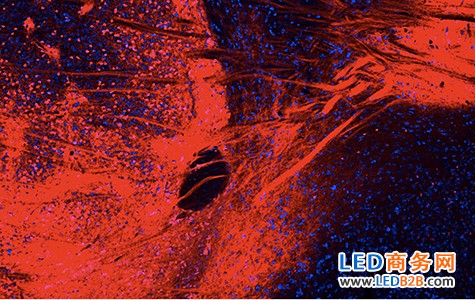
Privacy statement: Your privacy is very important to Us. Our company promises not to disclose your personal information to any external company with out your explicit permission.

This phenomenon is related to the brain reward and aversion reaction zone. Researchers at the University of Washington School of Pharmacy found that the brain's reward and aversive behavioral response blocks were very similar and could be inadvertently touched at the same time.

Image source: Bruchas Laboratory
The study found that treatment of addiction and depression medications can simultaneously drive rewards and aversive responses, which seem to be ineffective. The study was published in the September issue of the journal Neuron.
In the experiment, the LED light implanted in the mouse can drive the reward or disgusting neurons.

Image source: Bruchas Laboratory
Dr. Michael R. Bruchasl, associate professor and associate professor of anesthesia and basic neurobiology, said: "We studied the neurons of the k-type opioid receptor protein (KOR) that caused this response, which is associated with all addiction phenomena. Including alcohol, nicotine, cocaine, heroin, and methamphetamine. We trigger the opposite behavior by driving rewards and aversion to neurons that are very similar to the two reaction blocks. This phenomenon may indicate why drugs sometimes fail. ─ Drugs may drive both areas at the same time, thus offsetting the effect."
When the drug temporarily causes a reward reaction, it forms an addiction phenomenon, but when the drug effect disappears, it drives the aversion reaction, which in turn causes the brain to have a desire for drugs. The researchers looked at genetically engineered mice to allow light to drive cellular activity. Implanting micro LEDs onto neurons stimulates the nucleus accumbens and drives the reward response. These cells are covered with k-type opioid receptor protein (KOR) associated with addiction and depression.
When the researchers drive the brain cells and create a reward response, the mouse repeats back to the same block in the maze. But when driving cells a few centimeters away, the mouse will stay away from the area.
Dr. Ream Al-Hasani, a lecturer in anesthesiology and the first author of the thesis, said: "We are surprised to find that the stimulation in the same block of the brain and the same kind of cells can trigger different reactions. By understanding how this receptor works, we may be more precise. The right medicine to treat problems related to this brain cell area, such as addiction and depression."
Shenzhen LED Business Network focuses on LED B2B business platform, promoting LED enterprises to achieve Internet +. For details, please click http://, LED Business NetworkOn April 22, network activity named "FAST 2015 -! OPEN DAY" was launched by a brand LED high-power outdoor lighting manufacturer- Shenzhen Lead Optoelectronics Technology Co., Ltd.(Chinese name is...
Recently, the world's leading watch brand Hublot and brand ambassador, legendary track and field athlete Usain Bolt hand in hand into Kyoto, the ancient capital of Japan, with passion to ignite...
This article is reproduced, does not represent the world position of million table.
After two years of breakthrough in the laboratory's light efficiency of 200 lm/W, Cree has finally produced the series of LED chips with 200 lumens per watt at the end of 2012, and officially...
Email to this supplier

Privacy statement: Your privacy is very important to Us. Our company promises not to disclose your personal information to any external company with out your explicit permission.

Fill in more information so that we can get in touch with you faster
Privacy statement: Your privacy is very important to Us. Our company promises not to disclose your personal information to any external company with out your explicit permission.